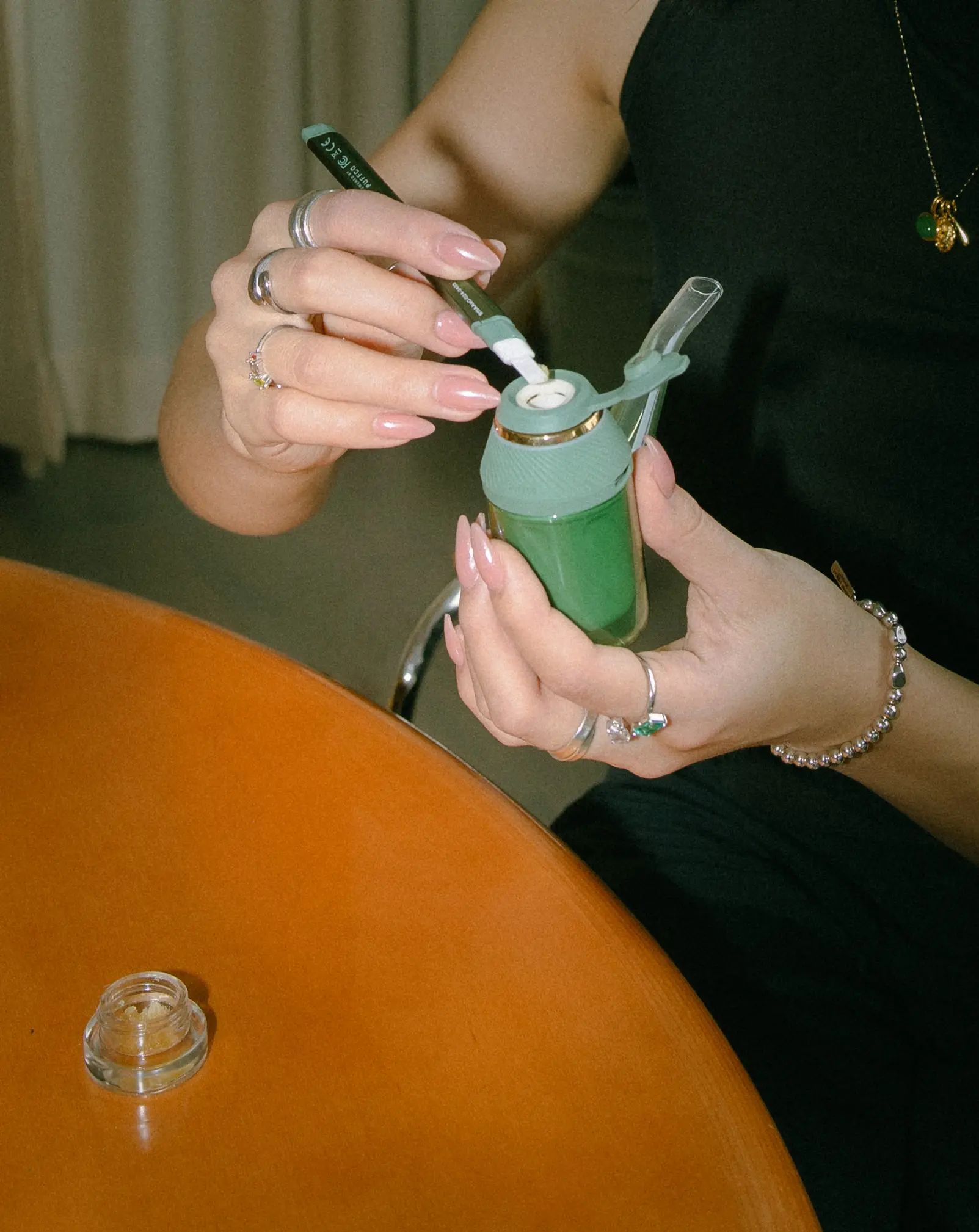
Disclaimer: This blog post may contain affiliate links where I may earn commission from qualifying purchases. This blog post is not intended to promote cannabis use and is not medical, health or professional advice. All opinions expressed in this blog post are my personal views and are intended for educational and entertainment purposes only. Information provided in this blog posts including without limitation information regarding product attributes is provided as general information
Introduction
Are you a weed joint smoker with concerns about how your habit is affecting your lungs and respiratory health? Or do you have a chronic cough and notice mucus and phlegm after smoking joints? In this blog, I’m going to dive into the topics of smoking joints in comparison to dried herb vaporizing and provide a comparison of the two methods of cannabis consumption.
What is dried herb vaporizing?
Dried herb vaporizing involves heating dried cannabis flower to a temperature that releases its active compounds such as THC and CBD into vapor without causing combustion. This method uses an electronic vaporizer device specifically designed for dried herbs. The vapor produced by vaporizing is inhaled, delivering the effects of cannabis without the harmful byproducts associated with smoking. Vaporizing is considered a healthier alternative to smoking because it can reduce toxins and carcinogens produced by combustion.
The history of smoking cannabis joints
Smoking cannabis joints involves rolling ground cannabis flower into a thin paper, applying heat to the end of the joint, and then smoking it via inhalation. Joints are a common method of consuming cannabis, delivering the active compounds into the body through inhalation of the smoke. The effects of smoking cannabis joints can vary depending on factors like the strain of cannabis used, the individual's tolerance, and the method of consumption.
The history of smoking cannabis joints dates back thousands of years. The exact origins of smoking cannabis in joint form are not precisely documented, but the practice likely emerged in various cultures where cannabis was traditionally consumed.
Historically, cannabis has been used for medicinal, spiritual, and recreational purposes in Asia, Africa, and the Middle East. Traditional methods of consumption have included smoking, eating, and brewing teas or tinctures.

Where did dried herb vaporizing come from?
The history of dried herb vaporizing is relatively new compared to the long history of cannabis consumption. Vaporizing as a method of cannabis consumption gained popularity in the late 20th and early 21st centuries, driven by advancements in technology and growing interest in safer and more efficient ways to consume cannabis.
The concept of vaporizing cannabis dates back to the 1960s, with the invention of the first vaporizer by American inventor Herbert A. Gilbert. However, Gilbert's invention was primarily designed for tobacco, and it didn't gain widespread popularity.
It wasn't until the late 20th century that the first vaporizers specifically designed for cannabis began to appear on the market. These early models were often bulky and required an external heat source, making them less practical for widespread use.
The real breakthrough for dried herb vaporizing came with the development of portable and more user-friendly vaporizer devices in the 2000s. These devices utilized convection or conduction heating to vaporize cannabis flower at controlled temperatures, allowing users to enjoy the benefits of cannabis without the harmful byproducts of combustion.
Vaporizing has gained popularity not only among recreational cannabis users but also among medical cannabis patients seeking a more precise and controlled method of dosage.
Overall, the history of dried herb vaporizing reflects a growing awareness of the health risks associated with smoking and a desire for alternative methods of cannabis consumption that offer greater safety, efficiency, and convenience.
Vaping vs. vaporizing
I want to be clear about the definition of vaporizing. The term vaping has attached itself to multiple different meanings over the years, specifically with the association with nicotine vaping which is very different from cannabis vaporizing, and even cannabis vaping. In this post, I define vaporizing as taking starting material and electronically heating it up to a desired temperature in order to release desired compounds, whereas I define vaping as the inhalation of cannabis or nicotine that has undergone processing, typically in the form of a vape pen, vape oil or vape liquid. The reason why I’m being very clear about this definition is because in 2019 there was a tragic incident where vitamin E acetate, an additive found in illicit cannabis-containing vapes caused 54 Americans to die and more than 2500 people to be sent to the hospital. This post is talking about vaporizing dried cannabis flower that is not processed.

Photo by Nery Zarate on Unsplash
Health implications of smoking cannabis joints
According to the NIH, there are several physical and mental health implications and risks associated with the consumption of cannabis. It's important to note that the health implications of smoking cannabis joints can vary depending on factors such as frequency of use, potency of the cannabis, method of consumption, and individual health characteristics.
Many of these risks can be mitigated by using alternative methods of cannabis consumption, such as vaporizing, edibles, or tinctures, which eliminate the harmful byproducts of combustion. Additionally, moderation and responsible use are key principles for minimizing potential health risks associated with cannabis consumption.
I think it's important to break this down because I am obviously a person who is in favor of cannabis. It's important to be objective when presenting scientific information so that people can make informed decisions on their own. Even though I am an advocate of cannabis, it is not for everyone. just like how alcohol isn't for everyone, and just like how caffeine isn't for everyone. Everybody's body is so different so just because something works for someone doesn't mean that it's going to work for you and vice versa.
Let's take a look at some of the physical risks associated with cannabis consumption specifically with inhalation methods as per the NIH:
- Respiratory Issues: Inhaling cannabis smoke exposes the respiratory system to irritants and carcinogens. This may lead to respiratory issues such as coughing, phlegm production, and bronchitis.
- Lung Damage: Cannabis smoke contains tar and harmful chemicals that can damage lung tissue over time, potentially increasing the risk of chronic bronchitis and other respiratory conditions.
- Cardiovascular Effects: Smoking cannabis joints may temporarily raise heart rate and blood pressure, which may pose risks for individuals with cardiovascular conditions or predispositions to heart problems.
Now let's look at some of the mental health risks associated with cannabis consumption as per the NIH:.
- Cognitive Impairment: Chronic cannabis consumption, particularly in high doses, may impair cognitive function, memory, and concentration, especially in adolescents and young adults whose brains are still developing.
- Psychological Effects: While cannabis is used for conditions like anxiety and PTSD, heavy and chronic use, especially high-THC strains, may exacerbate or trigger mental health issues such as anxiety, depression, and psychosis.
- Dependency and Addiction: Although cannabis addiction is less common than addiction to substances like alcohol or opioids, some individuals may develop a dependence on cannabis, experiencing withdrawal symptoms when attempting to quit.
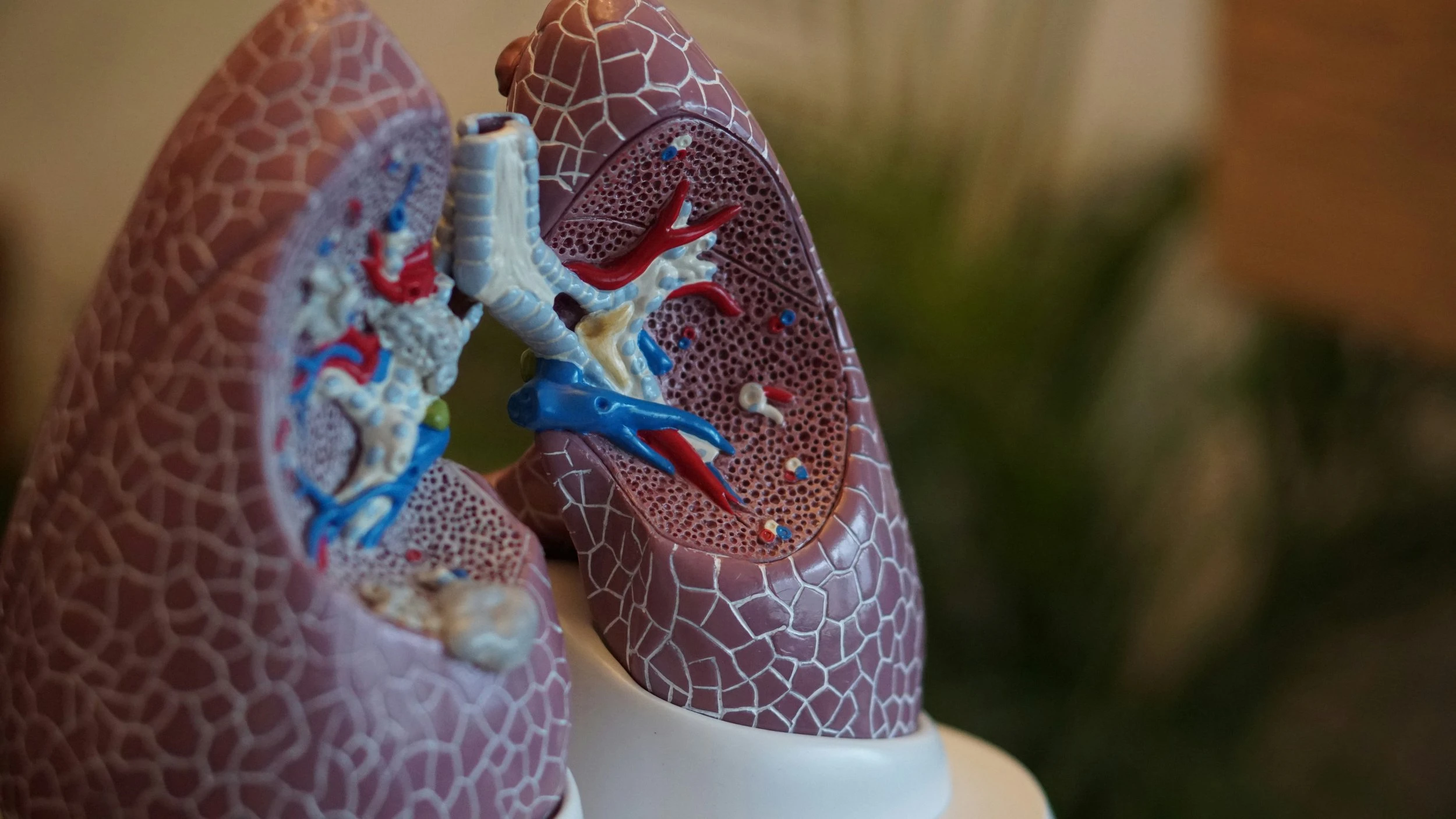
Photo by Robina Weermeijer on Unsplash
Beyond what the NIH says on their website, there are also a handful of published medical studies on the effects of cannabis smoking. Before we go into the studies, I do want to call out that the cannabis industry is heavily underfunded in terms of research. One of the main reasons for this is because currently cannabis is still a Schedule 1 drug making it difficult for researchers to get access to funding to perform research and studies. However the news just came out on May 13 2024 that potentially there is a proposal that cannabis will be moved from schedule 1 to schedule 3. but let's see if this actually ends up getting approved.
Canada is an interesting country when it comes to cannabis research because it is nationally legalized across the country, however from my perspective, there isn't enough studies coming out from Canada which may be due to a lack of funding and the immaturity of the legalized market, given that Canada has only been legalized since 2018.
When looking at the research for this blog post I looked at over a dozen articles that mostly had inconclusive findings. I found that alot of the research papers were not able to come to a definitive conclusion as to whether cannabis is good or bad. For example, cannabis smoking may present some health risks to the lungs, but it also offers a delivery system of cannabinoids to users that may help with certain ailments, such as helping cancer patients with increasing their appetite which can help with delivery of nutrients.
A 2021 study looked at cannabis use disorder and the lungs demonstrated that the available evidence indicates that smoking cannabis causes bronchitis and is associated with changes in lung function. disorder can be classified as mild, moderate, or severe based on the number of criteria met. The study found that the pattern effects of cannabis are surprisingly different from that of tobacco. Smoking cannabis appears to increase the risk of severe bronchitis at quite low exposure and there is no convincing evidence that it leads to chronic obstructive pulmonary disease. There are numerous reports of severe bullous lung disease and pneumothorax among heavy cannabis users, but convincing epidemiological data of an increased risk of emphysema or alveolar destruction are lacking. An association between cannabis and lung cancer remains unproven, with studies providing conflicting findings.
Another 2019 study found that conclusions regarding the respiratory issues of regular cannabis smoking are difficult to make due to a lack of literature, confounded by concurrent tobacco smoking and reports of conflicting outcomes.
This 2022 study looked at the differential effects of cannabis and tobacco on lung function in mid-adult life. The study looked at reports from ages 18, 21, 26, 32, 38, and 45 years in a population-based cohort study of 1,037 participants. Associations between lung function and cannabis use were adjusted for tobacco use. Data were available from 881 (88%) of 997 surviving participants. The study found that cannabis use is associated with higher lung volumes, suggesting hyperinflation. This first evidence demonstrated that lifetime cannabis use may be associated with impairment of gas transfer which is essentially a measure of how your lungs take in oxygen from the air you breathe.
I think it would be irresponsible to say that smoking cannabis doesn't have an impact on the lungs, however the severity of impact is going to be on a large sliding scale because there are so many nuances such as dose and frequency, materials used to smoke the joint such as the type of papers the type of filters, even the type of cannabis flower that is being used. At the end of the day it's up to the consumer to make the decision for themselves as to whether they want to take this risk on or not.
What research has been done on vaporizing?
A 2021 study conducted by the Canadian Public Health Association found that vaporizing reduces undesired toxic pyrolytic compounds or by-products and reduce exposure to carbon monoxide, thereby lowering risks of respiratory hazards as compared with smoking. A small non-randomized trial reported significantly improved respiratory symptoms and forced vital capacity (FVC) among cannabis smokers who switched to vaping cannabis for 30 days.
Another cross-sectional study found that vaporizer users were 40% less likely to report respiratory effects like cough, phlegm, and chest tightness than users who smoked cannabis, even after controlling for cigarette use and amount of cannabis consumed. The study did state that the long-term impact of using cannabis vaporizers on the cardiovascular system is still unknown. More research is needed to understand the effects on the cardiovascular system of switching to vaping from smoked cannabis
A 2003 study in the Journal of Cannabis Therapeutics conducted a study where they used a dried herb vaporizer device to vaporize three 200 mg samples of cannabis were temperatures of 311 - 425F. For comparison, smoke from combusted samples was also tested. The results showed that vaporization can deliver therapeutic doses of cannabinoids with a drastic reduction in pyrolytic smoke compounds (which is essentially the bad stuff you don’t want to inhale).
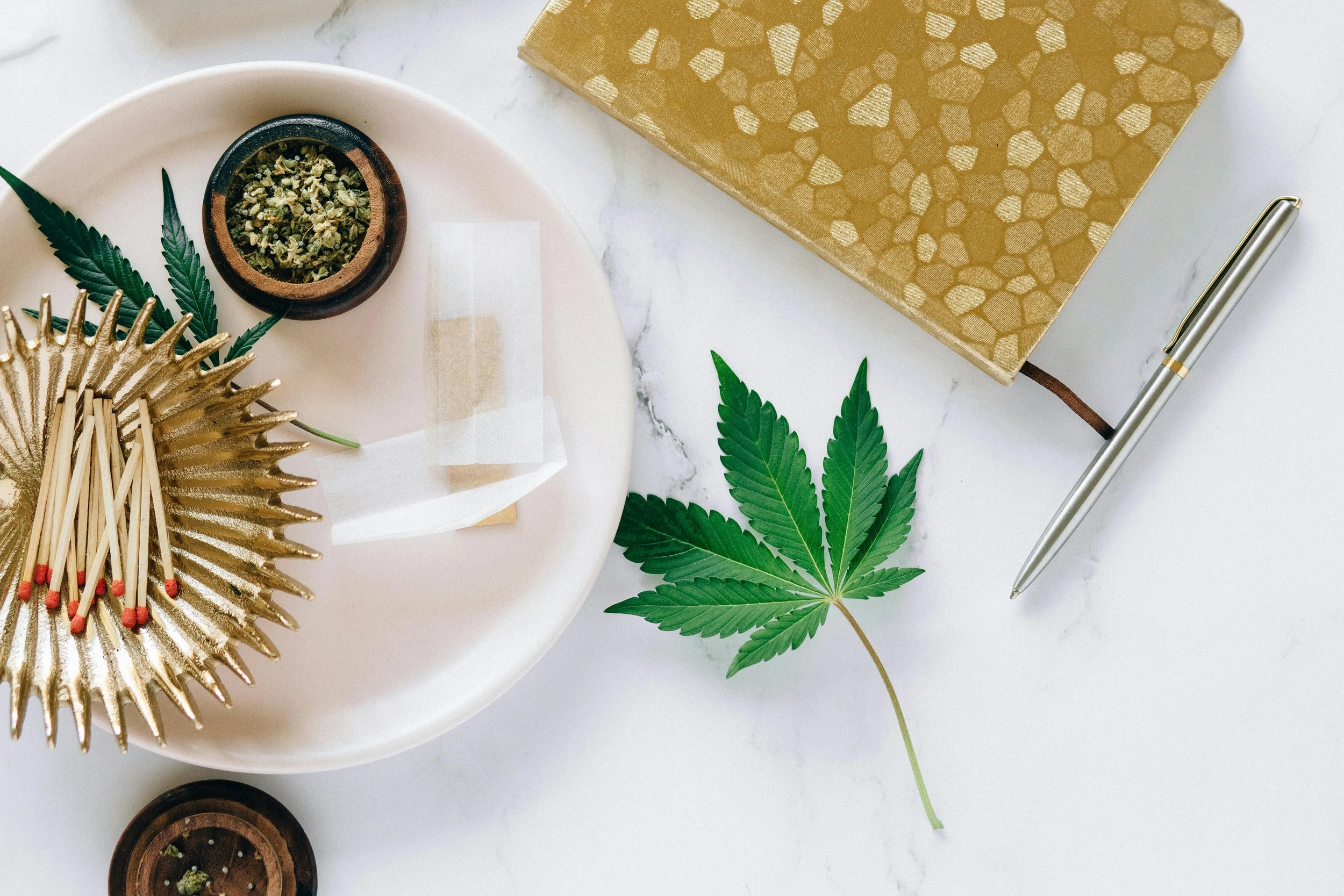
Smoking joints vs. vaporizing: efficiency, flavor, and user experience
Efficiency & Cost
It's hard to comment on the efficiency and cost savings that you have by using a vaporizer versus smoking cannabis joints because there's too much nuance to do the math correctly. I would have to do a study where we were taking a group of people that were strictly consuming the same type of flower with the same THC percentage with the same amount every day and then comparing that versus people who are using the same product but in a vaporizer. It would also get complicated in terms of measuring the efficiency or efficacy because everybody has a different tolerance as well. There is an incremental cost of purchasing a dried herb vaporizer device that could last you many years, versus spending that money on papers and filters (which is less expensive) but there's the additional trade off of potential health impacts.
Flavor Profile Differences: Terpene Availability
The amount of terpenes retained when vaporizing versus smoking cannabis can vary depending on several factors, including the temperature at which the cannabis is heated, the duration of heating, and the method of consumption. However, vaporizing tends to preserve more terpenes compared to smoking.
When cannabis is smoked, it undergoes combustion, which exposes the plant material to high temperatures, often exceeding 1000°F. At these temperatures, terpenes can degrade or evaporate, resulting in a loss of aromatic compounds and potentially reducing the overall terpene content of the inhaled smoke.
On the other hand, vaporizing heats cannabis to temperatures typically ranging from 140°C to 220°C (284°F to 428°F), which is below the point of combustion. This allows for the release of cannabinoids and terpenes in the form of vapor without burning the plant material. Because vaporizing operates at lower temperatures, it is more effective at preserving the delicate terpenes in cannabis.
For example, a study published in the Journal of Chromatography found that vaporizing cannabis at 200°C (392°F) retained significantly more terpenes compared to smoking, with vaporization resulting in a higher concentration of certain terpenes such as myrcene and limonene.

Photo by Cristi Ursea on Unsplash
User Experience: Convenience
When it comes to the user experience this is really subjective depending on the user. Cannabis joints can be more convenient at first glance because you just roll it or you can buy a pre-roll and then you can just light it up smoke it and then throw it in the garbage. Whereas with using a vaporizer device, you have to grind up the flower, put the it into the chamber, heat it. Then after you use it, you have to scoop it out and then repeat that process. Every few sessions you also need to clean the device.
Where vaporizers may be less convenient is that you also have to charge your device in order for it to work. Devices like the PAX have a 2+ hour battery life, which may be able to last a few days depending on how frequent you use it.
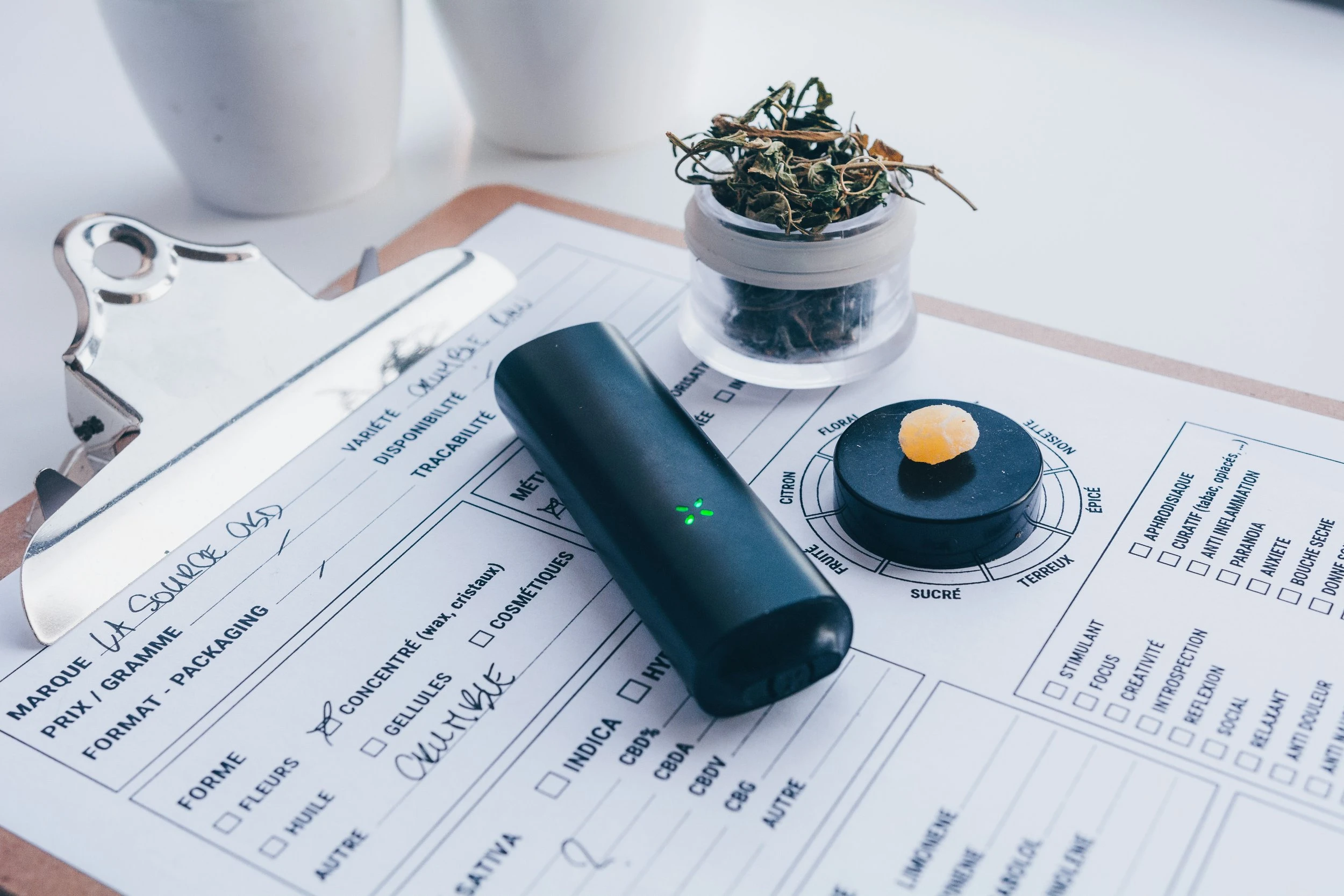
Photo by Testeur de CBD on Unsplash
User Experience: Odour
Devices like the PAX produce vapor instead of smoke so you end up having a less odorous experience. Vaporizers also allow for indoor use, as vapor dissipates into the air, whereas smoke lingers and can seep into your walls and fingertips.
My personal experience with switching to dried herb vaporizing
The first time I ever got introduced to the idea of dried herb vaporizing was when I started to notice some negative effects from smoking cannabis joints myself. I noticed that the day after smoking cannabis joints, I would have an increased phelgm production and I also noticed that my breath wouldn't smell as good and had a slight odor that was unpleasant to me. I became curious about why this was happening and I kihad an idea that smoking cannabis joints probably wasn't the healthiest way to consume the plant. That's when I started going on YouTube and looking at different videos and I came across this video, where I was able to visually see the difference between smoking joints versus dried herb vaporizing.
One of the main benefits that drew my interest into vaporizer technology is that you are able to maximize the delivery of terpenes into your system. Terpenes are organic compounds found in various plants, including cannabis, that contribute to their aroma, flavor, and therapeutic effects. They are produced in the resin glands of plants and serve various biological functions, such as deterring herbivores and attracting pollinators.
Terpenes are produced alongside cannabinoids like THC (tetrahydrocannabinol) and CBD (cannabidiol) in the trichomes, which are small, glandular structures on the surface of the plant. These compounds give each cannabis strain its distinctive scent and flavor profile. To read more about terpenes, check out my blog post that talks all about terpenes and why they are important.
After doing a lot of research about vaporizer devices, I ended up going with the PAX 3 which is now the PAX Plus and I've been using PAX for 5 years now (note: I was using PAX long before I started working with them as an affiliate, and I personally purchased my first PAX on my own). The reason why I’ve been using my PAX consistently is because I find it to be the easiest vaporizer to use, and because of it’s sleek and discreet design. I personally have noticed a substantial difference from switching to dried herb vaporizing. I no longer wake up with phlegm or mucus, and my dried flower experiences are much more smooth.
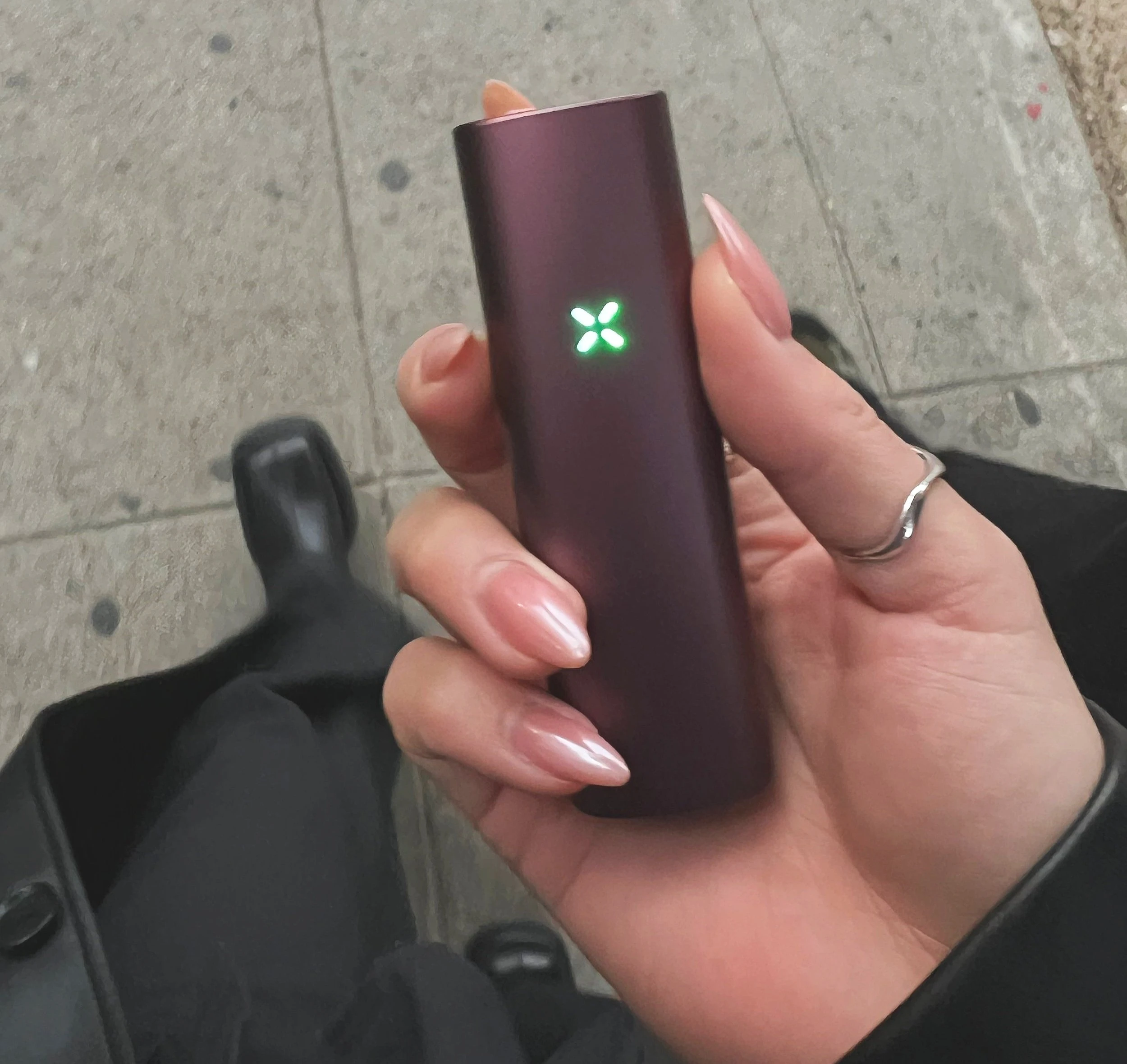
Photo by Cannabinista
Is dried herb vaporizing better for you than smoking joints?
Unfortunately, the answer isn't that simple and the answer is going to be different for everyone. The only definitive stance that I can take is that dried herb vaporizing is better for me and that's because I've been able to compare the difference between smoking joints and how I feel after that and using dried herb vaporizer and how I feel after that.
Investing in a dried herb vaporizer device will come at an additional cost, but as a consumer, you have the information to understand the trade-offs and whether you're willing to invest in a product that can potentially help you with reducing risk.
If you’re interested in getting the same vaporizer that I use, use code CANNABINISTA for 15% off any PAX Dried Herb Vaporizer. I currently use the PAX Plus and have used the PAX 3 in the past (previous model). There are many other dried herb vaporizers out there on the market, so feel free to do your own research. I’ve tested a handful of different ones in the market, and I find myself coming back to the PAX mainly because of their 10-year limited warranty and the design of the product.
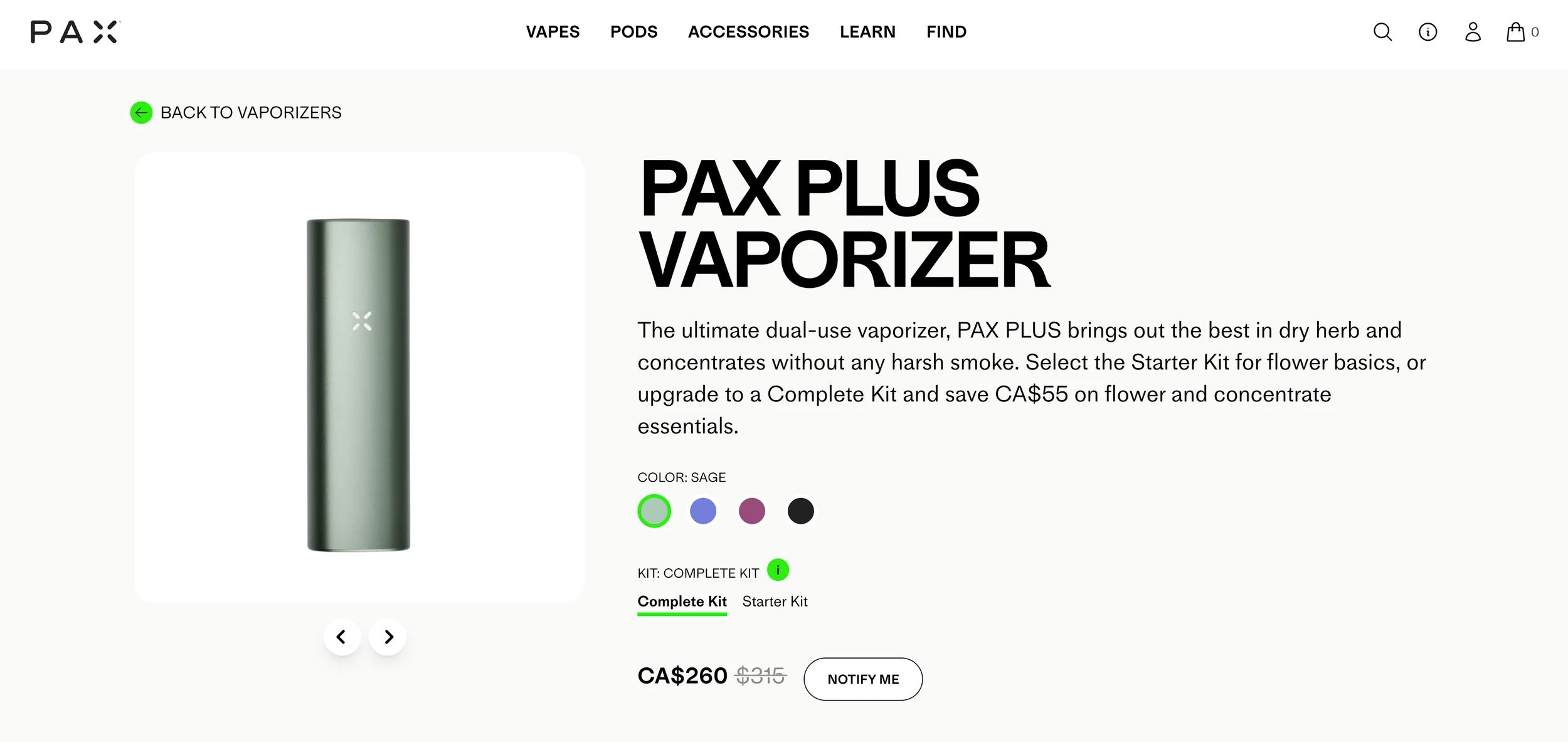
Screenshot from PAX. I currently use the PAX Plus Vaporizer in Sage Green.

Hey I’m Anna, also known as Cannabinista™
I’m a cannabis content creator, recipe developer, and enthusiast for the ancient plant. I’ve dedicated my platforms to helping you create a healthy relationship with cannabis through mindful consumption and providing education that resonates with the modern consumer.
My ultimate goal is to debunk traditional stoner stereotypes and myths, by showcasing the world of cannabis through my POV.


